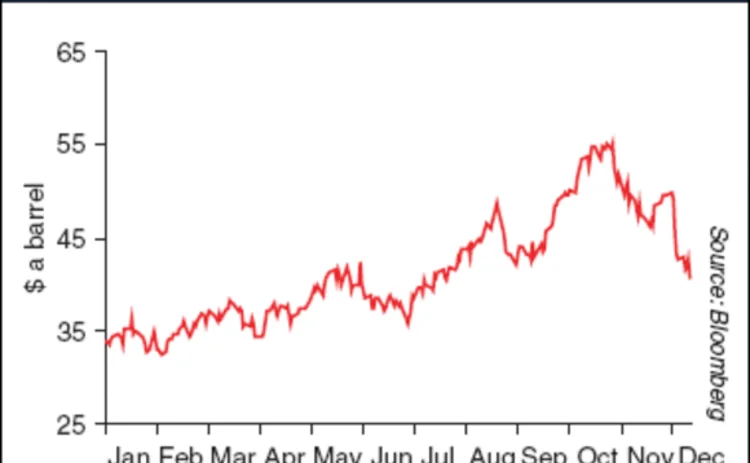
A wrong-way bet
China Aviation Oil (CAO) revealed in late November that it had lost $550 million through trading oil derivatives – but not before its Chinese parent sold $108 million in CAO shares. By Nick Sawyer, with additional reporting by Jill Wong

The revelation of the losses in late November has sparked separate investigations by Singapore’s white-collar crime unit, the Commercial Affairs Department (CAD), and PricewaterhouseCoopers (PwC), appointed by the Singapore Exchange (SGX) to review the company’s internal control and risk management policies and to look into the circumstances leading to the losses.
But the trading debacle has also brought to light broader corporate governance and disclosure failures by the firm and its government-owned parent, China Aviation Oil Holdings Corporation (CAOHC). In particular, an affidavit signed on November 29 by CAO chief executive Chen Jiulin states that a share placement by the parent company on October 20, in which it placed 15% of its CAO stock with institutional investors through sole bookrunner Deutsche Bank, was conducted 10 days after CAOHC was first made aware of its subsidiary’s losses. What’s more, the sale of CAO stock, which raised around $108 million, was done specifically to raise capital for CAO’s margin calls, the affidavit says. The derivatives trading losses were not disclosed to Deutsche Bank or to any of the investors.
“This raises the issue of corporate governance and transparency among Chinese companies. Despite strict rules on derivatives trading, CAO was still able to participate in speculative trading,” says John Bailey, managing director of corporate and government ratings for greater China at Standard & Poor’s in Hong Kong.
CAO’s trading losses come on the back of a surge in oil prices over the past 12 months, with the Nymex oil futures contract reaching a record high of $55.17 a barrel on October 26 compared with just $34 at the start of the year. The rise in prices left China Aviation – which took a view that oil prices would fall – unable to meet margin calls on its derivatives positions, prompting several of CAO’s counterparties to close out trades with an aggregate realised loss of $390 million as of November 29.
The company has asked its counterparties to close out the remaining positions and reckons it will realise further losses of around $160 million. By December 7, CAO had closed out all but three futures and options trades, while 25 counterparties had terminated swaps trades with the company. But there are still 35 counterparties with swaps positions open, meaning the final losses could differ from the $550 million estimate.
CAO began trading oil derivatives on its own account in the second half of last year to bolster profitability. It started off slowly, taking positions on just 2 million barrels of oil, but by the end of the first quarter of this year – with oil prices climbing steadily higher – the company had racked up $5.8 million in mark-to-market losses. Rather than close out the positions, the company decided to increase the size of its trades and roll over its positions in the hope that oil prices would fall.
By the end of the second quarter, with oil prices hovering around $40 a barrel, the firm’s losses had increased to $30 million. At this point, says Chen in the November 29 affidavit, the losses would have had an adverse impact on the company. As a result, CAO rolled back the positions once again to 2005 and 2006, and further increased the size of the trades. By the time oil prices reached record highs in late October, the company had trading positions on an astonishing 52 million barrels of oil.
With mark-to-market losses spiralling out of control, the company started to struggle with margin call payments, prompting several counterparties to unilaterally close out trades. For instance, on November 16, the firm received a payment demand from Goldman Sachs subsidiary J Aron for settlement on six trades involving swaps and options on Brent crude, Singapore fuel oil and Singapore jet fuel for a total of more than $12 million. One of the trades involved the sale of call options by CAO on 300,000 barrels of Brent crude at a strike price of $34.25 and an expiry of October 29. The option was exercised at $49.34, causing a loss of around $4.5 million for the firm.
By late November, the company had received payment demands for margin payments and settlement of derivatives trades from J Aron, Mitsui & Co Energy Risk Management, Barclays Capital, South Africa’s Standard Bank, Sumitomo Mitsui Banking Corporation, Fortis Bank and Australia’s Macquarie Bank totalling $247.5 million. Other banks, such as Société Générale – one of CAO’s principal bankers and lead arranger of a $160 million five-year syndicated loan transacted in July last year – are also believed to have conducted derivatives trades with the firm, although Société Générale declined to comment.
In fact, none of the banks contacted by Risk were willing to comment on the record about their exposures, although a London-based official at Mitsui – whose company requested payment for $70 million on November 9 and a further $73 million on November 17 after closing out eight trades – said the firm has managed to reduce most of its exposure.
The magnitude of the trading losses forced CAO to apply to Singapore’s High Court in late November to protect it from claims while it agrees a rescue package and negotiates a settlement with creditors. As part of a potential rescue deal, CAOHC has approached Temasek, the Singapore government’s investment arm, to help with the restructuring.
Temasek, which has an indirect stake of around 2% in CAO, has expressed an interest in injecting $50 million into the company, in combination with another $50 million from China Aviation Oil Holdings. “At the invitation of CAOHC, we have expressed an indicative interest to explore possible participation as an investor in the company’s restructuring efforts,” says a Singapore-based spokesperson at Temasek. “It is premature to make any judgement at this juncture. We will await developments and make our decision after we have fuller information on the restructuring proposals.”
CAO now has six weeks – extended on December 10 from the original 14-day deadline – to file an affidavit outlining details of the restructuring. The company must then hold a creditors’ meeting within six months. In the meantime, the company has set up a wholly owned subsidiary to continue its jet fuel procurement business on an agency basis.
But the question is how could the losses have reached a level large enough to cripple the company? In its prospectus, published in November 2001, CAO states that once mark-to-market losses from a single trader reach $200,000, the chief executive, risk management committee and the trader are put ‘on alert’ by the risk controller. Each trader has a stop-loss limit of $500,000, and if losses breach this limit, all open positions must be closed unless the chief executive gives approval, the prospectus says.
Observers are mystified as to how the chief executive, risk management committee and risk controller could have allowed the losses to reach $550 million. The failures in the firm’s risk management, internal controls and accounting policies fall under the PwC investigation, which will probably be finalised in the first quarter of 2005. “Currently the timeline is very unclear. It looks like it could be a long process,” says a PwC official, declining to comment further on the investigation.
The failures in disclosure and corporate governance also raise serious questions. The first signs of trouble came on November 12 in the company’s third-quarter results. Gross profit fell by 91.5% compared with the third quarter of 2003, with the firm stating the “unexpected rapid steep increase” in the price of oil had eroded profit margins. Then, on November 16, the company declared it would exit all speculative trading positions by the end of that month to “respond proactively to conditions arising in the international oil trading business”. But CAO did not disclose any mark-to-market losses at that time.
When it eventually did announce the losses at the end of November, the company said the problem was not declared earlier because “the directors believe that the interest of the shareholders of the company would be better served if the company could put together at least a potential rescue plan when the trading losses are disclosed, as opposed to an immediate disclosure as and when the losses were realised without any solution at hand for the creditor problem”.
But that’s likely to be cold comfort to investors, particularly if Chen’s assertion that CAOHC knew about the losses when it placed 15% of its CAO stock on October 20, and that the S$196 million ($108 million) proceeds were loaned to CAO to cover its margin payments, is proved to be correct. CAO declined to comment on Chen’s affidavit. “Until the investigation is concluded, we cannot comment on that,” said a spokesperson for the firm.
The CAO stock was placed with mostly Asia-based hedge fund investors at a 14% discount through Deutsche Bank, the sole bookrunner of the deal. As a block trade, Deutsche is not required to conduct comprehensive due diligence on the company, and a Hong Kong-based spokesperson notes the transaction was done in accordance with normal market practices. “The diligence conducted by Deutsche Bank included questioning of the company’s financial situation and whether there were any issues current or pending that could have a material adverse impact on the business or its financial condition. The answers provided gave us confidence to proceed with the placement,” he says.
Institutional investors were asked to sign ‘toxic waste’ letters – effectively confirming they are aware that limited due diligence was conducted by the bank. What’s more, it’s understood that the majority of the hedge fund investors quickly sold the stock to take advantage of the 14% discount.
But retail investors have been seeking legal advice on whether they can sue CAO or its parent. “The Securities Investment Association of Singapore (SIAS) has been talking to its lawyers about how we can help retail investors who have lost money at this stage, although it is early days to suggest there are grounds for legal action because investigations into the episode have only just begun,” says David Gerald, Singapore-based president of the SIAS, adding that the association has received a “deluge” of enquiries from retail investors.
“At this moment we are not in a position to advise whether the parent company can be sued,” Gerald continues. “On the assumption [CAOHC] knew losses were being incurred and continued to pursue the placement giving the market the impression that everything was well, then it will probably be a matter for a higher level than retail investors. The question then arises as to whether the stock exchange and the Monetary Authority of Singapore will get involved.”
Singapore’s CAD has arrested Chen, who has subsequently been released on bail, while four other CAO employees, including Gerard Rigby, CAO deputy head of trading, have surrendered their passports. However, the CAD declined to comment on whether its investigation would extend to CAOHC’s share placement.
Meanwhile, the SGX met Jia Changbin, chairman of the board of directors of CAO and president of CAOHC, in early December. SGX would not give details of its investigation, but released a statement quoting Jia as saying: “We will do our utmost as a representative parent company to provide our full support for the restructuring effort of CAO.” The compay later clarified that any financial support is conditional on the acceptance by creditors of the restructuring plan.
Singapore’s government has made it clear that it sees the investigation into CAO as crucial for upholding the City State’s reputation as a financial centre. But how vigorously the authorities will, or in fact are able to, investigate CAOHC, a Chinese government-owned entity, is open to question. At the same time, investors may have difficulties pursuing CAOHC through the courts.
“The preferable location [for any court action] would be Singapore, with a respectable, well-tested legal system. The issues are also likely to be Singapore listing issues (disclosure, directors’ fiduciary duties, etc), which would not be well understood by Chinese judges. However, if the defendant’s only assets in Singapore are the shares of an insolvent company, any decision would have to be enforced in China – and I am not aware of any Singapore (or other foreign) court judgements being enforced against state-owned companies in China,” says one partner at a global law firm in Hong Kong. “The alternative is to bring an action where the defendant has assets - China. However, I am not aware of any successful court actions brought by foreign plaintiffs against state-owned companies in China.”
| A. CAO's payment demands as of November 29 | |||
| Company | Date of demand | Amount (US$) | Details |
| Barclays Capital | October 29 | 26,461,650 | Settlement of three derivatives transactions |
| Mitsui & Co Energy Risk Management | November 9 | 70,331,400 | Unwinding of 50% volume of eight derivatives contracts |
| J Aron & Company (Singapore) | November 16 | 12,397,805 | Settlement of six swap and options transactions |
| Mitsui & Co Energy Risk Management | November 17 | 73,314,300 | Unwinding of remaining 50% volume of eight derivatives contracts |
| Standard Bank London | November 17 | 14,430,398.90 | Margin call |
| Macquarie Bank | November 19 | 2,610,000 | Margin call |
| Sumitomo Mitsui Banking Corporation | November 23 | 113,72639.02 | Demand for repayment of short term credit facility, plus interest and default interest |
| Fortis Bank | November 24 | 33,100,000 | No details |
| J Aron & Company (Singapore) | November 24 | 3,500,000 | Margin call |
| Total | 247,518,192.92 | ||
Only users who have a paid subscription or are part of a corporate subscription are able to print or copy content.
To access these options, along with all other subscription benefits, please contact info@risk.net or view our subscription options here: http://subscriptions.risk.net/subscribe
You are currently unable to print this content. Please contact info@risk.net to find out more.
You are currently unable to copy this content. Please contact info@risk.net to find out more.
Copyright Infopro Digital Limited. All rights reserved.
You may share this content using our article tools. Printing this content is for the sole use of the Authorised User (named subscriber), as outlined in our terms and conditions - https://www.infopro-insight.com/terms-conditions/insight-subscriptions/
If you would like to purchase additional rights please email info@risk.net
Copyright Infopro Digital Limited. All rights reserved.
You may share this content using our article tools. Copying this content is for the sole use of the Authorised User (named subscriber), as outlined in our terms and conditions - https://www.infopro-insight.com/terms-conditions/insight-subscriptions/
If you would like to purchase additional rights please email info@risk.net
More on Markets
Rethinking P&L attribution for options
A buy-side perspective on how to decompose the P&L of index options is presented
Buy side would welcome more guidance on managing margin calls
FSB report calls for regulators to review existing standards for non-bank liquidity management
Citi halves swaptions book with US retail funds
Counterparty Radar: Mutual funds and ETFs cut exposures by 22% in Q4
Who’s winning the €STR futures race? Depends how you measure
CME, Eurex and Ice all claim to be leading, but experts say it’s too early to pick a winner
CDS review seeks to tackle conflicts ‘elephant’
Isda AGM: Linklaters proposes overhaul for determinations committee - including independent members
Saudi Arabia poised to become clean netting jurisdiction
Isda AGM: Netting regulation awaiting final approvals from regulators
Buy side looks to fill talent gap in yen rates trading
Isda AGM: Japan rate rises spark demand for traders; dealers say inexperience could trigger volatility
JP Morgan’s new way to trade FX overlays
Hybrid execution method allows clients to put dealers in competition via a single trading agreement







